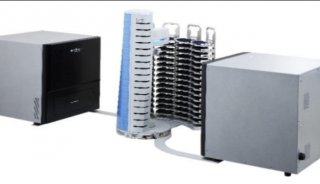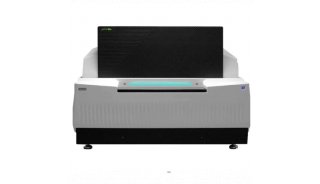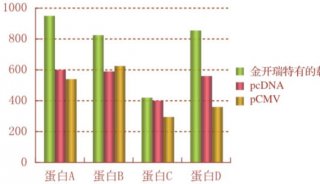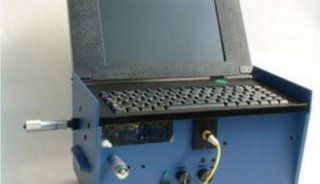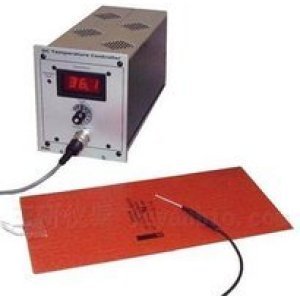腺相关病毒(AAV)在动物实验中的应用(二)
三、肝脏
AAV2、AAV5、AAV7 和 AAV8,其中 AAV7 和 AAV8 的效率是 AAV2 的 10-100 倍。注射部位常选择门静脉、外周静脉和尾静脉。注射病毒滴度一般选择 8×10^10-2×10^12(GC/kg)(人、灵长类);1×10^11 GC/只鼠,稀释成 50-100 μl 进行尾静脉注射;注射 2 周之后可以检测。下图为肝脏注射的一些情况:

Fig 6. In vivo vector specificity analysis
四、心脏和动脉
对心脏和动脉而言,常用血清型有:AAV1、AAV6、AAV8 和 AAV9 。其中 AAV2、AAV5、AAV7 也可以使用,但是表达比较慢,3 个月后表达量才能与 AAV1、AAV6 表达量相当。所有血清型中 AAV8 和 AAV9 最有效,2 个月左右其表达量达到最高。
常见的注射部位为冠状动脉、主动脉、心肌和尾静脉。注射病毒滴度为 1.9×10^11-10^12 GC/ml,稀释成 100 μl- 250 μl(大鼠剂量稍高于小鼠)注射;但是对于心脏原点注射而言,常采用 10^10 GC/ml 病毒滴度,稀释成 20 μl 使用。检测时间:一般在2周之后可以检测。下图为注射的一些情况:

Biodistribution of LacZ expression and vector genomes 4 weeks after direct injection of 5 ×1011 vg of AAV8- and AAV9-CB-LacZ into the rat heart., heart; Li, liver; Lu, lung; Br, brain; Te, testis; Ki, kidney; Sp, spleen; St, stomach; Ga, gastrocnemius.
HUMAN GENE THERAPY 19:1359–1368
五、肺脏
肺脏常用血清型有 AAV1、AAV2、AAV5、AAV6 和 AAV9。由于肺脏表面唾液酸受体分布比较多,因此 AAV5 型比较常用;相比之下 AAV2 和 AAV6 转导效率相当。常见的注射方式有滴鼻、雾化吸入或气管内注射,注射病毒滴度为 10^12 GC/ml ,稀释成 3 μl,注射完之后 2 周可以检测表达情况。下图为注射的一些情况:

Histochemical detection of AP expression in mouse lungs 1 month after vector exposure.
JOURNAL OF VIROLOGY, Feb. 2000, p. 1524–1532
六、肾脏
肾脏常用血清型有 AAV2、AAV8 和 AAV9。注射病毒的滴度一般选择 1-5×10^11 GC/ml,稀释成 50-200 μl 注射。常见的注射部位有肾动脉、肾静脉和左髂脉、腹主动脉,注射完 2 周之后可以检测表达情况。下图为注射的一些情况:

In vivo long-term transduction by AAV serotype 2 vector into the rat kidney.
Nephron Exp Nephrol 2004;96 :e119–e126
七、肌肉
肌肉组织常用血清型有 AAV2、AAV8 和 AAV9。其中 AAV8、AAV9 最常用,心肌、胰腺和肾上腺也是如此。骨骼肌分为快速和慢速肌纤维,AAV2 常作用于慢速肌纤维,AAV6 则对二者都有效。对不同年龄阶段的鼠,注射剂量有所不同:幼鼠选择的病毒量为 7×10^10-1.2×10^11 GC/g;成年鼠选择的病毒量为 3.5 ×10^11-7×10^12 GC/只;但是低剂量的 AAV9 不能到达所有心肌细胞。下图为注射的一些情况:

Transduction of muscle fibersby different AAV serotypes.
J Gene Med 2005; 7: 442–451.

Representative photomicrographs of sections of skeletal muscle
MOLECULAR THERAPY Vol. 14, No. 1, July 2006
八、肠
肠组织常用血清型有 AAV1、AAV2 和 AAV5。常见的注射方式有口服、灌肠、腹腔注射、肠系膜动脉注射。一般选择注射滴度 1×10^11 GC/ml ,稀释成 100 μl(PBS或者稀释液稀释)使用,注射 2 周后可以检测。
参考文献:
Weinberg, M.S., R.J. Samulski, and T.J. McCown, Adeno-associated virus (AAV) gene therapy for neurological disease. Neuropharmacology, 2013. 69: p. 82-8.
Iwata, N., et al., Global brain delivery of neprilysin gene by intravascular administration of AAV vector in mice. Sci Rep, 2013. 3: p. 1472.
Pang, J.J., et al., Comparative analysis of in vivo and in vitro AAV vector transduction in the neonatal mouse retina: effects of serotype and site of administration. Vision Res, 2008. 48(3): p. 377-85.
Lisowski, L., et al., Selection and evaluation of clinically relevant AAV variants in a xenograft liver model. Nature, 2014. 506(7488): p. 382-6.
Wang, L., et al., Sustained expression of therapeutic level of factor IX in hemophilia B dogs by AAV-mediated gene therapy in liver. Mol Ther, 2000. 1(2): p. 154-8.
Nathwani, A.C., et al., Safe and efficient transduction of the liver after peripheral vein infusion of self-complementary AAV vector results in stable therapeutic expression of human FIX in nonhuman primates. Blood, 2007. 109(4): p. 1414-21.
Manno, C.S., et al., Successful transduction of liver in hemophilia by AAV-Factor IX and limitations imposed by the host immune response. Nat Med, 2006. 12(3): p. 342-7.
Palomeque, J., et al., Efficiency of eight different AAV serotypes in transducing rat myocardium in vivo. Gene therapy, 2007. 14(13): p. 989-997.
Vassalli, G., et al., Adeno-associated virus (AAV) vectors achieve prolonged transgene expression in mouse myocardium and arteries in vivo: a comparative study with adenovirus vectors. International Journal of Cardiology, 2003. 90(2-3): p. 229-238.
Bish, L.T., et al., Adeno-associated virus (AAV) serotype 9 provides global cardiac gene transfer superior to AAV1, AAV6, AAV7, and AAV8 in the mouse and rat. Human gene therapy, 2008. 19(12): p. 1359-1368.
Halbert, C.L., et al., Repeat transduction in the mouse lung by using adeno-associated virus vectors with different serotypes. Journal of virology, 2000. 74(3): p. 1524-1532.
Takeda, S., et al., Successful gene transfer using adeno-associated virus vectors into the kidney: comparison among adeno-associated virus serotype 1-5 vectors in vitro and in vivo. Nephron Exp Nephrol, 2004. 96(4): p. e119-26.
Qi, Y.F., et al., Comparison of the transduction efficiency of tyrosine-mutant adeno-associated virus serotype vectors in kidney. Clin Exp Pharmacol Physiol, 2013. 40(1): p. 53-5.
The potent dial of adeno-assoc iated viral vectors for gene delivery to muscle tissue. Expert Opin Drug Deliv., 2014. 11(3).
Z Wang1, H.-I.M., 3, J Li1, L Sun1, J Zhang1 and X Xiao1,2, Rapid and highly efficient transduction by doublestranded adeno-associated virus vectors in vitro and in vivo. Gene Therapy, 2003. 2003(10): p. 2105—2111.
Polyak, Steven, et al. Gene delivery to intestinal epithelial cells in vitro and in vivo with recombinant adeno-associated virus types 1, 2 and 5. Digestive diseases and sciences 53.5 (2008): 1261-1270.
Polyak, S., et al., Gene delivery to intestinal epithelial cells in vitro and in vivo with recombinant adeno-associated virus types 1, 2 and 5. Digestive diseases and sciences, 2008. 53(5): p. 1261-1270.







